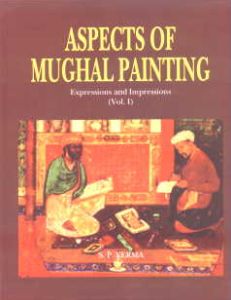
Contents: Preface. Abbreviations. Glossary. I. Rise of the Mughal School: 1. Mughal painting, patrons and painters. 2. Akbar's School of painting: Mughal vision and approach. 3. Origins of the Mughal School of painting. 4. Artists' signatures in the miniatures of the Mughal School. II. Manuscript illustration: 1. Painting under Akbar as narrative art. 2. An illustrated manuscript of the Diwan-i-Hafiz of Akbar's Court. 3. Anwar-i Suhaili--an illustrated manuscript of Akbar's court. 4. Aspects of paintings in the British Museum Manuscript of the Akbarnama. 5. Chela painters of the Mughal Court. 6. La'l: the Forgotten master. 7. Seventeenth century illustrated manuscript of the Padshahnama. III. Album pictures and portraits: 1. Sixteenth century miniatures at the Royal Library (Windsor) and India Office Library (London). 2. Portraits of the calligraphers depicted in the Mughal miniatures. 3. Portraits of ordinary men from the sixteenth century Mughal School. 4. Evidence of self-portrait painting in Indian art. 5. Elements of historicity in the portraits of the Mughal School. Bibliography. Index.
"Present collection of essays researched and analyzed by S.P. Verma, since 1973, provides the readers an introduction to the Mughal painting. The sixteen studies in this volume offer afresh interpretation of the Mughal miniatures. These relate to the aesthetic values, art-forms, signs and symbols, and the social and cultural history. Most importantly, Akbar's attempt to liberate painting from the straitjacket of sectarian ideology is the theme of Chapter 1.2. The 'artists signatures' (Chapter 1.4) and 'self-portraits' (Chapter 3.4) are the new features introduced with the rise of Mughal school. The volume draws on diverse textual sources to delve into the social history of dominant themes, motifs and styles. Verma presents a vivid account of the sixteenth century narrative art (Chapter 2.1), and major illustrated manuscripts (Chapters 2.2-3.4 and 7). Chapter 1.1 provides insights into the life and times of patrons and artists. Verma also touches parallel art traditions. His approach to the subject features the Mughal painting as an historical source.
Present thematic volume will interest serious scholars and students of Mughal history and cultural studies, and also art historians, connoisseurs of art and those interested in the development of painting in South Asia." (jacket)